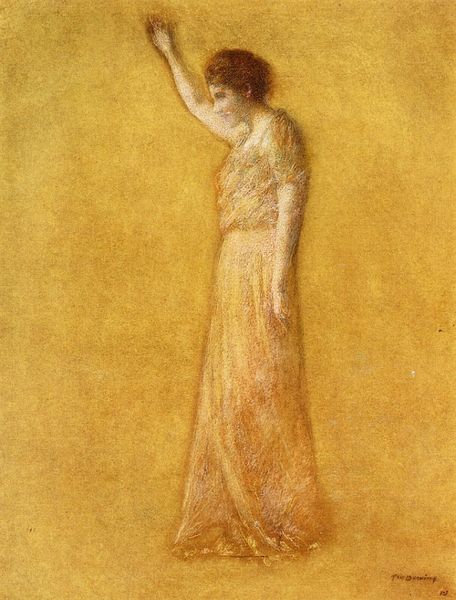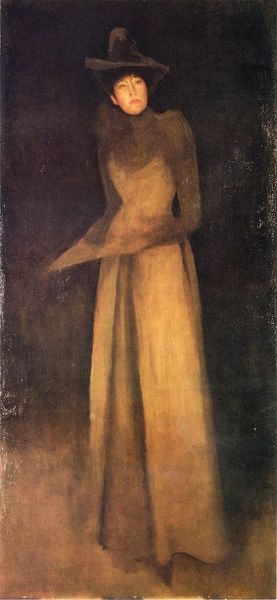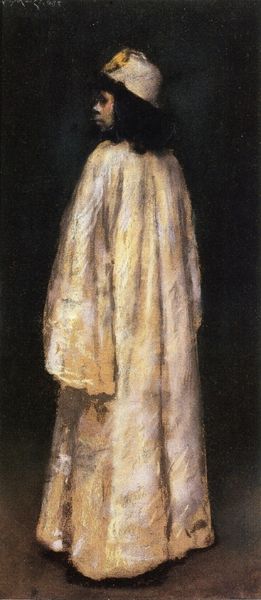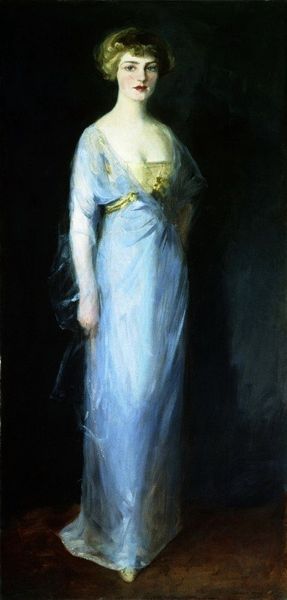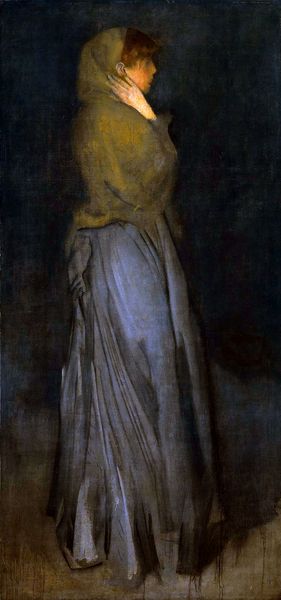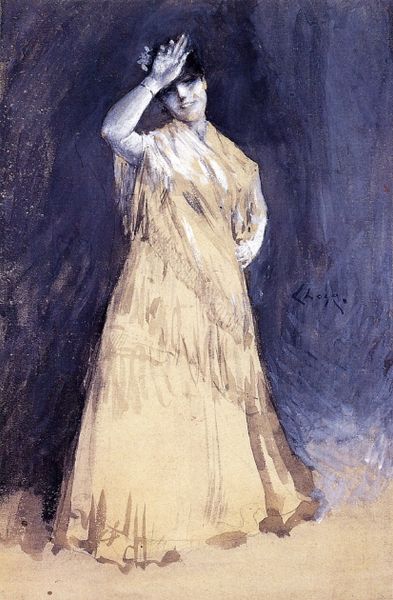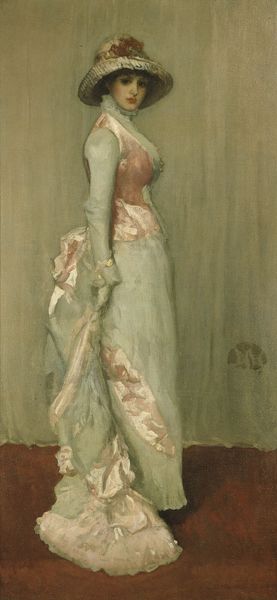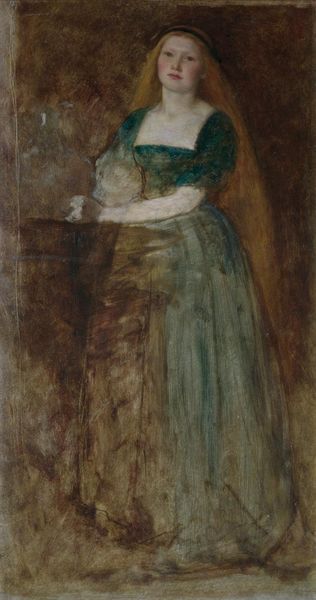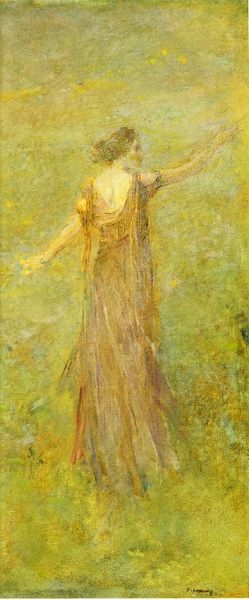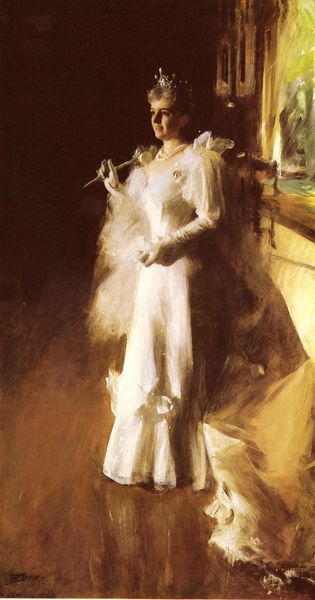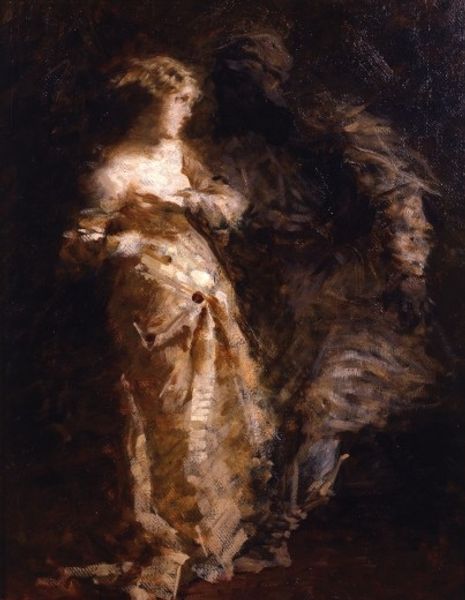
Dimensions: 73.03 x 49.85 cm
Copyright: Public domain
Editor: Here we have James Abbott McNeill Whistler's "The Little Red Cap," an oil painting from 1899. The figure seems to almost melt into the background. It's... evocative, but I'm not entirely sure what to make of it. How do you interpret this work? Curator: This piece whispers to us, doesn't it? Whistler was deeply invested in evoking a mood through colour and form. Notice how the figure is rendered—almost a memory or a dream. What symbolic weight does this ephemeral treatment carry, do you think? Editor: Maybe it's about the fleeting nature of youth and beauty? The model's partially nude, shrouded yet revealed... a tension there? Curator: Precisely! The "red cap," although barely visible, hints at vibrancy and life, contrasting with the muted tones and fading form. Whistler uses this symbol to ignite cultural memory. He's not just painting a body; he’s painting an experience, filtered through the gauze of time and suggestion. Does it remind you of something? Editor: Sort of like classical sculptures that we only know through fragments now, and we imagine the whole? Curator: Good eye! This piece invites us to complete the image in our minds, tapping into our collective understanding of beauty, mortality, and artistic legacy. It reflects our memory and ideas of youth more than reality itself. Editor: I never considered how the fading effect engages the viewer so directly, making us almost active participants in completing the story. Thank you. Curator: It is indeed a dialogue, isn’t it? Art inviting us to converse across time and personal experience.
Comments
No comments
Be the first to comment and join the conversation on the ultimate creative platform.
